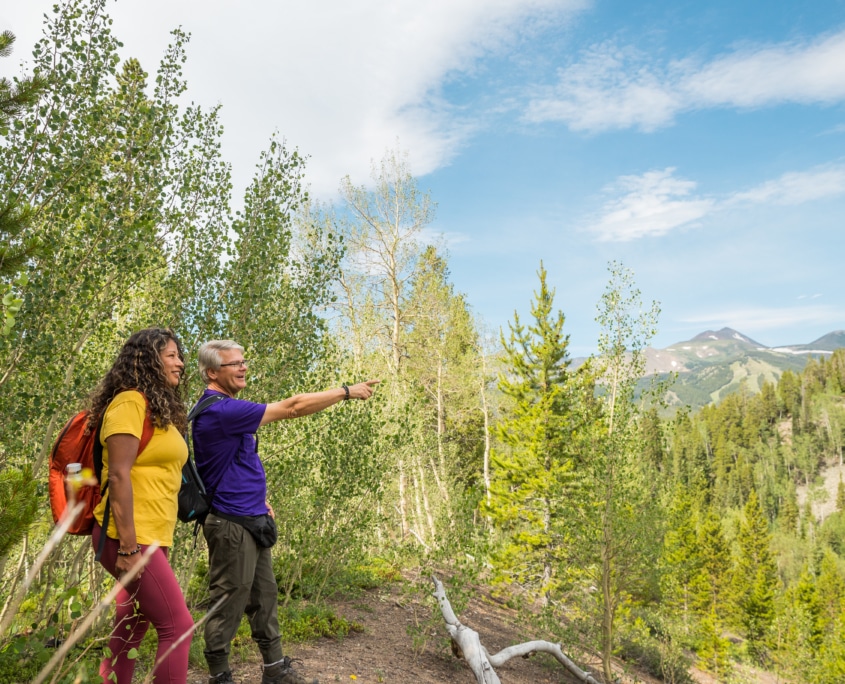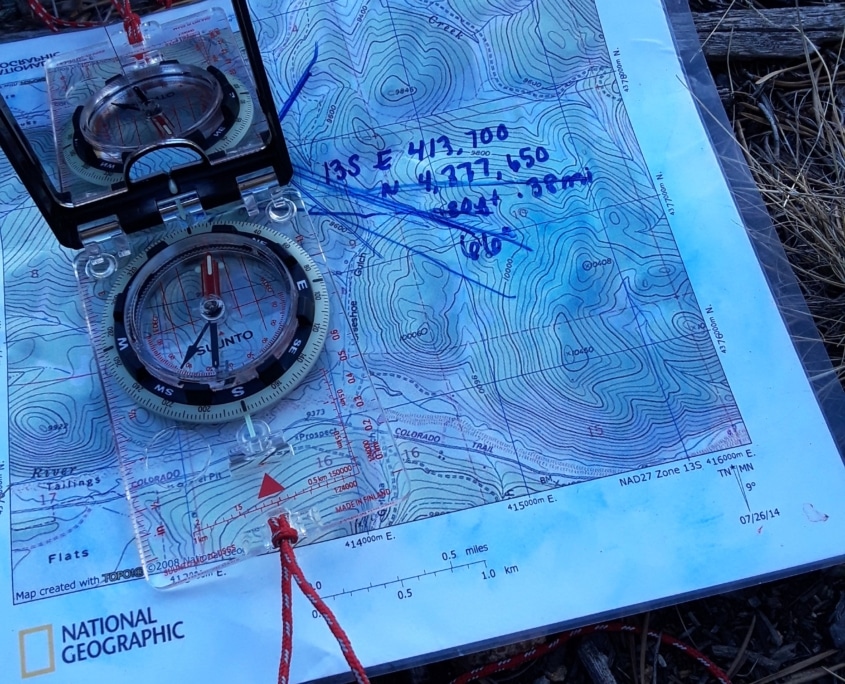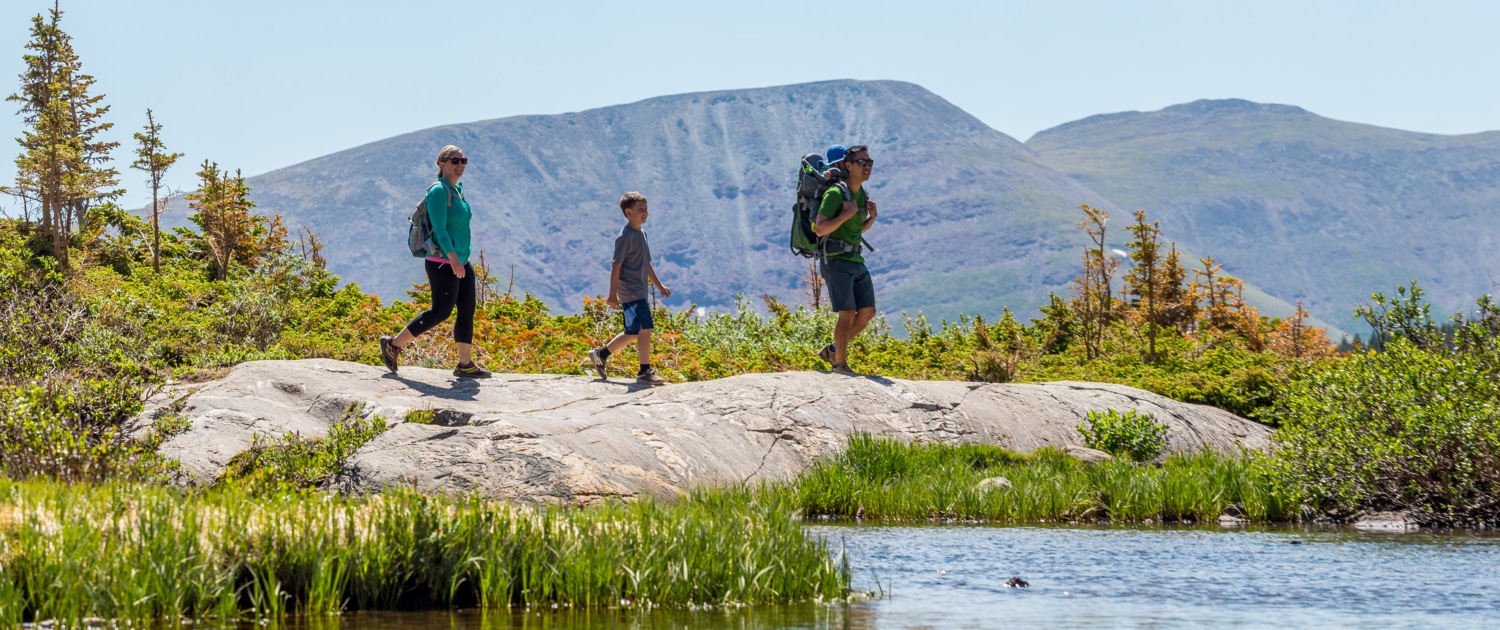Get your hiking shoes ready because summer is just around the corner! This warm weather has us excited for alpine lakes, scenic vistas, and time on the trail. Hiking is a great way to get some exercise and experience the outdoors but it is important to be prepared no matter your experience level. Make sure you are ready to go with these essentials for your next hike.
Layers
Outer Layer
Your outer layer is what will protect you from the elements. It is common in the high country for quick afternoon showers or thunderstorms to sweep through, making it important to have a waterproof outer layer such as a rain jacket. Bonus points if your daypack comes with a rain cover! Nobody wants to hike back to the trailhead with soggy clothes. Even if rain isn’t in the forecast, bring a waterproof shell along just in case.
Mid Layer
The mid-layer, also called the insulating layer, keeps you warm and retains your body heat. Hiking in the high country, especially above the tree line, can get colder than you might expect. Packing a puffy or fleece jacket is essential, even on a warm day. If lower temperatures are expected, warmer mid-layer hiking pants can be worn over a base layer and provide extra warmth as well.
Base Layer
The base layer is what is worn closest to your body with the purpose of wicking moisture and keeping you dry and warm. Ideally, base layers are made from wool or synthetic material (or a combination). Wool is natural, lightweight, and odor-resistant but can be more expensive. Synthetics, on the other hand, won’t keep you as warm but are better at wicking moisture and are less expensive. Either way, choosing a good base layer and avoiding hiking in materials like cotton will keep you warm and dry for your day in the outdoors!

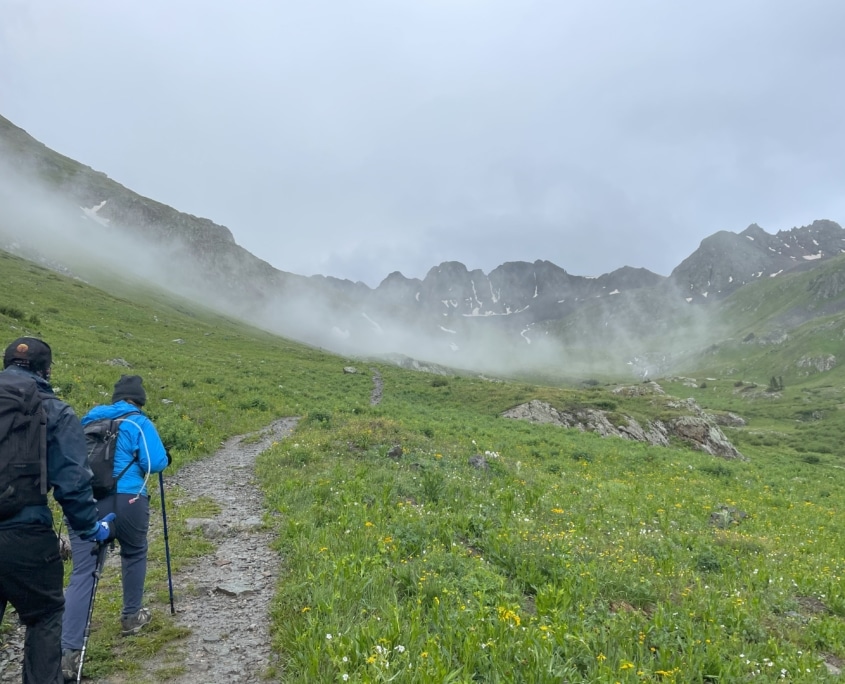
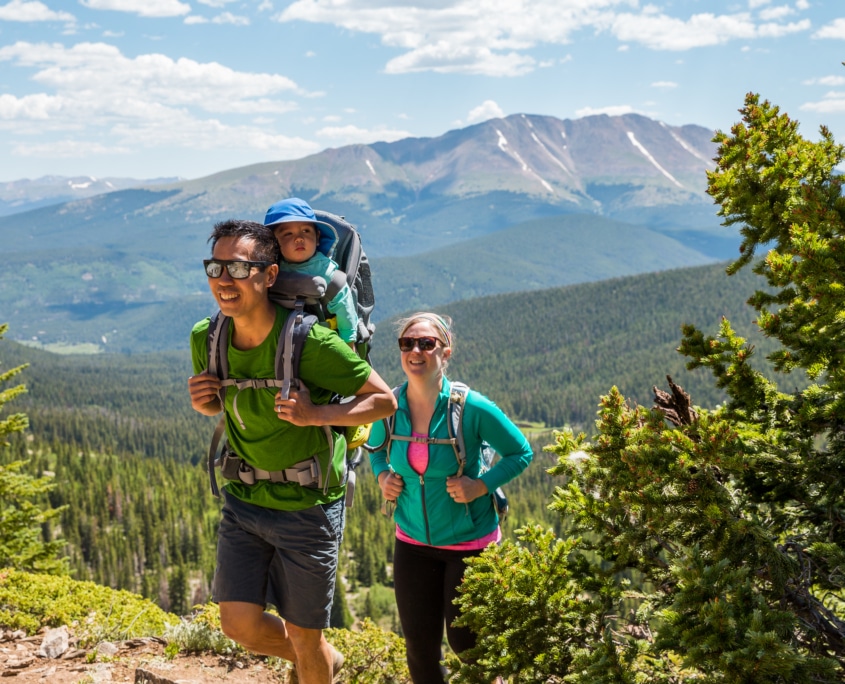
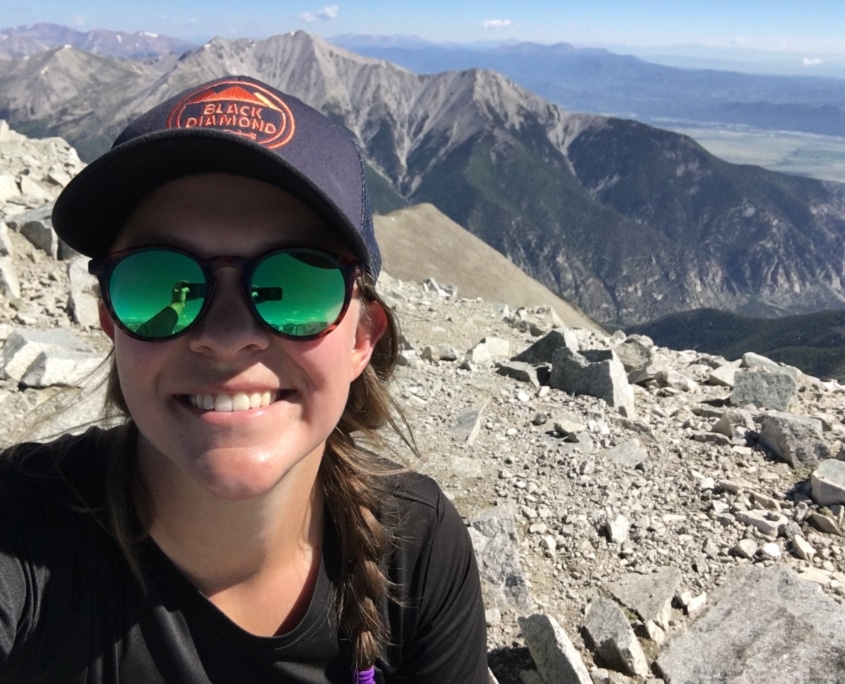
Sun Protection
Sunscreen
Colorado is famous for its 300 days of sunshine! The sun here at 10,000 feet can feel much more intense- the “thinner” air allows more UV rays to reach you. Even on a short hike, bring sunscreen of 30 SPF or higher and apply it to exposed skin to avoid a burn.
Hat
In addition to wearing sunscreen, wear a hat on your hike, and protect your face and neck. A baseball cap will protect your face from excess sun exposure. A wide-brimmed sun or hiking hat will give added protection to your neck and ears. Another way to protect your neck from sun exposure is to wear a lightweight neck buff.
Sunglasses
Protect your eyes! Exposure to UV rays can cause serious damage. Choose sunglasses for your hike that block both UV-A and UV-B rays. They should have a label that says they provide 100% UV protection!
Lip Balm with SPF
Your lips can burn just like anything else- in fact, they are even more sensitive. Sunburned lips are no fun- resulting in redness, swelling, and peeling. Avoid these symptoms by packing a lip balm that contains SPF. Most brands have a sun-protective option, and they can save you from discomfort!
Bug Spray
Mosquitos tend to make an appearance if you are hiking near water sources, especially in the evening. If you have a hike to a lake or near a river on your agenda, pack some bug spray!
Hiking Gear
Footwear
Having comfortable and appropriate hiking footwear can make or break your day! The two most suitable options for hiking on trails in Colorado are hiking boots or trail runners. Hiking boots are more sturdy and rigid, typically providing more ankle support. If your hike involves scrambling or hiking over boulders or scree fields, it may be a good idea to wear boots. Trail runners are lighter in weight and have lower profiles, and they wear more like tennis shoes but with more traction. While trail runners do not offer as much ankle support, they will also generally keep your feet cooler. Look for waterproof options to avoid getting your feet wet!
Daypack
With hundreds of options to choose from, it can be tricky to know where to start when it comes to choosing a backpack. If you plan on enjoying shorter hikes that will only last part of a day, look for options labeled Daypack. These packs will be lighter weight and smaller volume. Look for weather-resistant packs with a few compartments to keep you organized and a method to store your water bottle or bladder.
Hiking Poles
For hiking in the Rockies, especially for longer hikes, hiking poles can be a very helpful tool! They can help improve posture, aid in balance, and put less pressure on your knees. Poles can help get you through those uphill climbs as well!
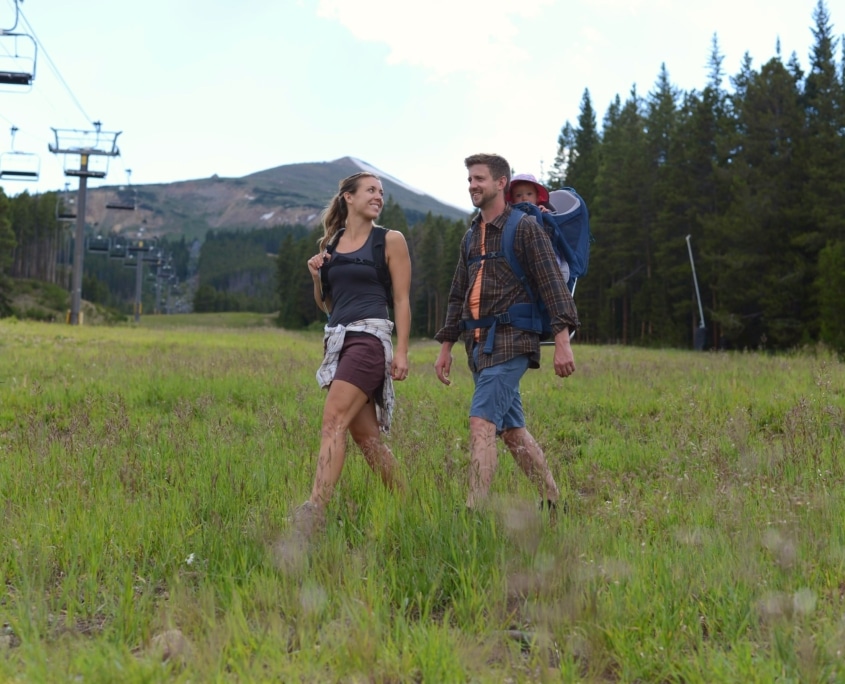
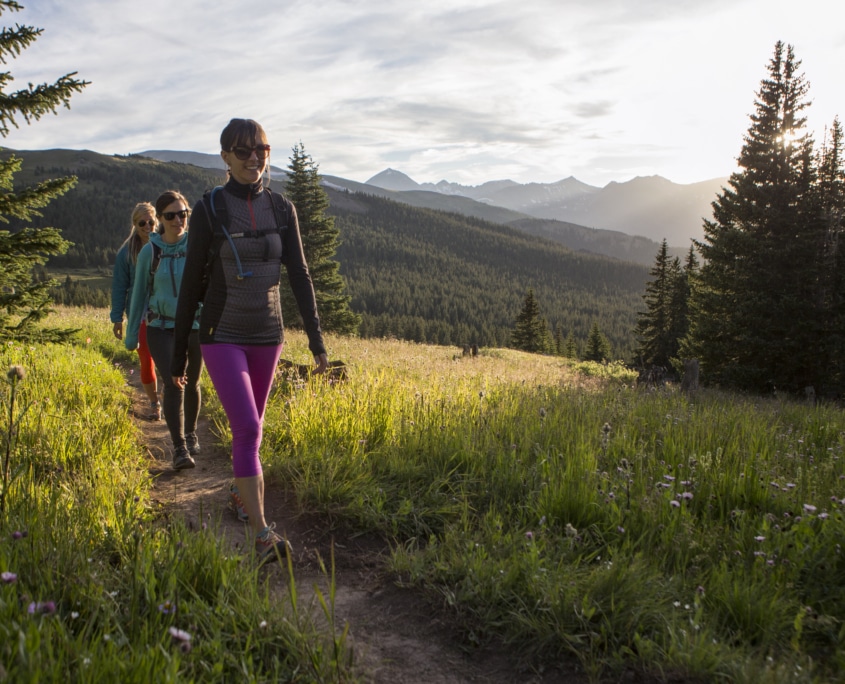
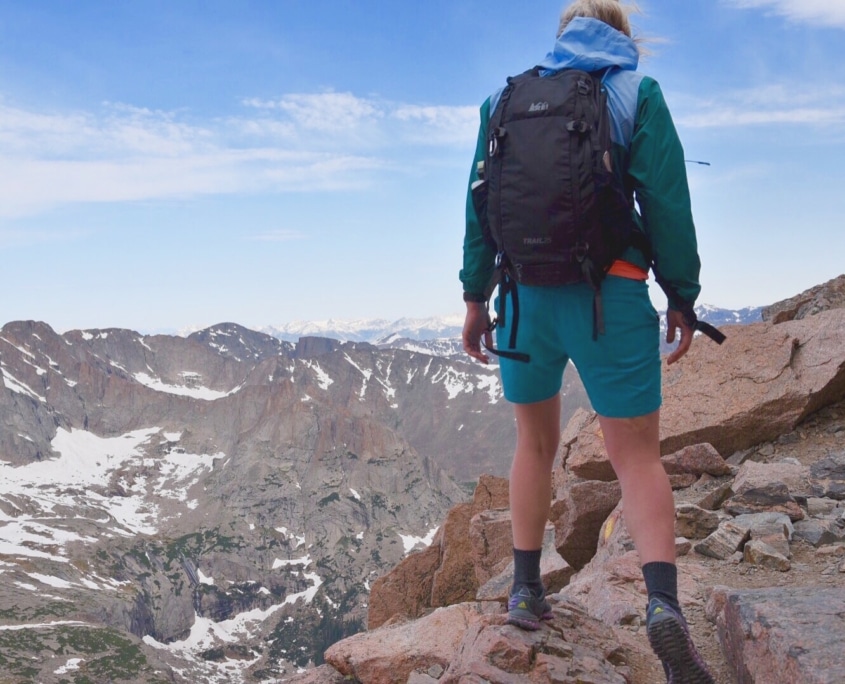
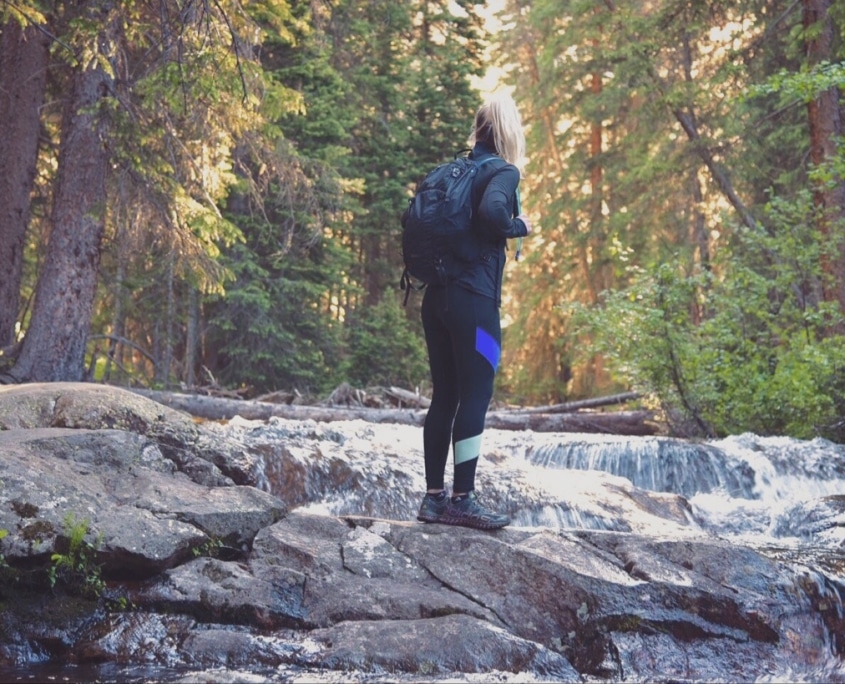
Food & Water
Food
Nobody wants a hangry hiker! When packing your snacks for the day, look for a mix of carbohydrates, protein, and fats. Here are a few great options to power you through your hike!
- Trail mix
- Jerky
- Cheese and crackers
- Fruit
- Dark chocolate
- Granola bars
- Fruit snacks
- Peanut butter and banana sandwiches.
Water
This one is obvious! We use a lot of water while hiking- especially at high altitudes. While hiking, you should drink about one liter every two hours. Most people can hike about two to three miles per hour. Bring ample water for your hike in water bottles or a hydration pack.
Safety
First Aid
You know what they say- expect the best, prepare for the worst. Having a lightweight kit that you can stash in your pack for trips will prepare you for not only emergency situations but also minor inconveniences and discomforts. Your first-aid kit should include the following at a minimum:
- Over-the-counter medications: pain relief, antihistamines, insect sting relief, etc.
- Wound care: bandages, gauze, antiseptic, etc.
- Tools: tweezers, scissors, gloves
Pack any medications or altitude relief you may need along with your first aid!
Navigation
You would be surprised how many hikers get off track, even on “easy” trails. Being prepared and having the ability to find your way back to a trail if you get lost are essential skills for any level of hiker. Many hikers will use applications such as AllTrails to navigate to a trail. If using something like this, download the offline map for use when you are out of cell phone service, make sure your phone has plenty of battery life, and bring a backup battery. More reliable navigation tools such as GPS, maps, and compasses are recommended, along with the knowledge of how to use them! Always make sure someone knows where you are hiking and when you are expected to return.
Safety Kit
While it might feel unnecessary for a day hike, it is better to be overprepared and have nothing happen than the opposite! The following tools in a small, lightweight kit can help you through an emergency. You can build your own kit or buy several pre-made options!
Items to include in your safety kit: headlamp, water purification tablets, fire-starting tool, safety whistle and mirror, multi-tool, paracord, and emergency blanket.
